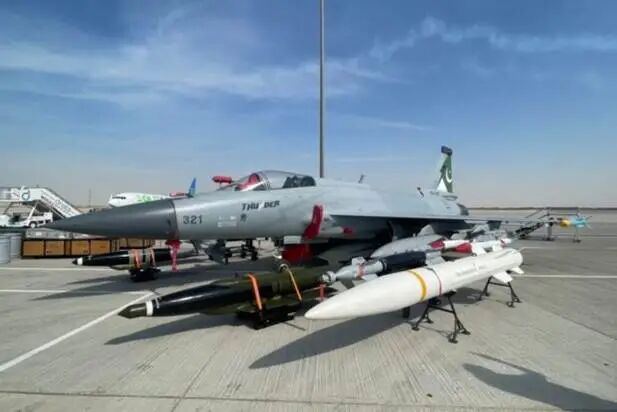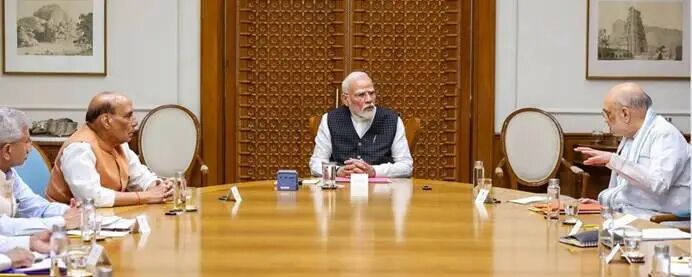
November 23, 2025, Issue No. 1108
Duty Editor: He Jiawei Lin Xigia
Review: Wang Ruotong Wang Zeyuan Yu Wanlin
Executive Editor: Chen Zhuo
*To read today's newspaper, please follow the WeChat official account "South Asia Research Group"

Emails between Epstein and Steve Bannon. Source: Internet
The Wire website of India reported on November 21 that Jeffrey Epstein facilitated a meeting between Modi and Steve Bannon, the former chief strategist of Trump's White House in 2019, causing a stir in the U.S. political arena. It is known that some contents of Epstein's 18,000 emails prove that he had close relationships with many Indian political and business figures, including Modi, Hardeep Singh Puri, a core member of the BJP, and Anil Ambani, an Indian business magnate. For example, Puri joined the BJP in January 2014 and met Epstein in June 2014. From June 2014 to January 2017, Puri appeared at least five times on Epstein's appointment list and met him multiple times. Another example shows that Epstein strongly advocated for Modi's meeting with Bannon, his first visit to Israel, and the establishment of an India-Israel strategic partnership. Although Bannon was dismissed from the White House in 2017, he still has some influence in the "Make America Great Again" (MAGA) circle and once provided political strategy advice to Trump. Notably, Bannon is a typical anti-China figure in the American conservative circles. He once publicly stated that "China is the biggest survival threat to the United States" and called for increasing the intensity of the trade war to suppress China's "global economic ambitions." Analysts said that the recently disclosed emails reveal Epstein's actions, which may cause a "nuclear-level" shock in the U.S. political arena, possibly reshaping the midterm election landscape, undermining the credibility of Western elites, and affecting U.S.-India relations and India's geopolitical strategy planning.
NEWS

Source: Economic Times
Economic Times and The Indian Express reported on November 22 that only 13% of "Made in India" electric vehicles (EVs) meet the domestic content requirements of India's Production Linked Incentive (PLI) program, with the rest using imported components, especially relying on imports from China. According to the PLI, the domestic value addition (DVA) of automotive products must be at least 50%. However, data shows that out of 46 electric vehicles sold in India, only six meet the PLI regulations, accounting for approximately 13%. Currently, five pure electric vehicle models from Tata Motors - Punch EV, Nexon EV, Harrier EV, Tiago EV, Tigor EV, and Mahindra's XEV9E have met the PLI standards and are eligible for subsidy policies. Analysts pointed out that the domestic electric vehicle parts industry ecosystem in India is still not complete: on one hand, components such as lithium-ion battery cells, rare earth magnets, semiconductor chips, DC motors, stacked stators, and printed circuit boards rely on imports from China. On the other hand, India lacks the production capacity for most new components, including new batteries, electric motors, and electronic equipment, which account for 50-60% of the total value of an electric vehicle.
NEWS

Prime Minister Modi of India met with Canadian Prime Minister Mark (left) and Australian Prime Minister Albanese (third from left) during the G20 Summit. Source: X
Indian Express and The Print reported on October 22 that Modi proposed to establish an Innovation Partnership (ACITI) with Australia and Canada during the G20 Leaders' Summit. In his opening speech, Modi proposed five major initiatives: In the field of critical minerals, Modi proposed the "Critical Minerals Circularity Initiative," promoting innovative measures in recycling, urban mining, and secondary batteries. In the cultural field, Modi advocated establishing a global traditional knowledge repository based on the "Indian Knowledge System Plan." In the talent field, India plans to train one million certified trainers in Africa within 10 years, aiming to enhance the technical skills of African youth. In the counter-terrorism field, India will intensify efforts to combat drug trafficking and terrorism, weakening the "drug-terror economy" through financial, governance, and security measures. In the medical field, India suggested that G20 member states jointly establish medical expert groups to improve the response mechanisms for global health crises and natural disasters. Additionally, during the summit, Modi met with Canadian Prime Minister Mark and Australian Prime Minister Albanese, establishing the "Australia-Canada-India Innovation (ACITI) Partnership." Modi highly praised the agreement, stating that it would deepen cooperation among Australia, Canada, and India across three continents and three oceans in emerging technology fields such as supply chain diversification, clean energy, and artificial intelligence. Moreover, Modi noted that this is the first time an African country has hosted the G20 Summit, stating that "Africa is being used by great powers," and one way to address this issue is to promote India's "holistic humanism" civilizational values.
NEWS

Source: IEEFA website
Reuters reported on November 20 that Indian solar module manufacturers face dual challenges of overcapacity and rapid technological iteration. Specifically, on one hand, Indian companies have low technical levels. Currently, about 110 GW of solar module capacity has been approved in India, but only 70%-75% can be adapted to next-generation mainstream technologies such as TOPCon (Tunnel Oxide Passivated Contact) and bifacial modules. On the other hand, there is a significant imbalance between supply and demand. The capacity of solar modules in India is expected to increase to 165 GW, while the domestic installation demand is only 4.5-5 GW. Industry insiders pointed out that under the background of global oversupply and continuous decline in component prices, small enterprises with only component capacity and old technology will be eliminated first, while integrated industry chain enterprises with battery, silicon wafer, and ingot production capabilities will have more advantages. The Modi government plans to push component manufacturers to move upstream by 2028, integrating silicon wafer and ingot production links, to reduce reliance on Chinese products. Notably, due to anti-dumping investigations against China and increased tariffs, the export of Indian solar products to the U.S. is expected to slow down.
NEWS

Source: New Delhi Television
New Delhi Television and The Hindu reported on November 20 that "Generation Z" protests resurfaced in Nepal, and the local government has imposed curfews to respond. On November 19, Shankar Pokharel, General Secretary of the Communist Party of Nepal (United Marxist Leninist) (CPN-UML), and youth leader Mahesh Basnet planned to attend an anti-government rally in Biratnagar. After the news spread, a large number of "Generation Z" protesters gathered at the airport to oppose and clashed with local CPN-UML supporters, resulting in 10 injured people and the cancellation of the rally. On November 20, protesters again gathered at Biratnagar Square to protest the police's failure to arrest those involved in the previous day's conflict, during which they burned police posts and party office items. Subsequently, authorities imposed temporary control around the airport and arrested two CPN-UML district officials suspected of attacking young protesters. Previously, in September 2025, "Generation Z" launched large-scale protests, and CPN-UML leaders, former Prime Minister Sharma Oli, announced his resignation. In response, Nepalese interim Prime Minister Sushila Karki issued a statement on the evening of November 19, calling on all parties to exercise restraint, avoid political provocation, maintain the democratic process, and create a fair environment for elections. Analysts believe that as the election approaches, the greatest challenge facing the Nepalese interim government is balancing various demands and preventing the escalation of violence.
NEWS

Source: Defense Mirror
Defense media outlet Defense Mirror reported on November 22 that Pakistan signed an export agreement for the JF-17 Block III fighter jets with an unknown country during the 2025 Dubai Air Show. The Pakistani Air Force confirmed the news on November 20 but did not disclose the buyer's identity. Industry insiders speculate that potential customers may include Ukraine, Qatar, and Sri Lanka. During this air show, Pakistan exhibited the JF-17 fighter jet and the Super Mushshak trainer aircraft. The JF-17 fighter jet attracted attention from multiple delegations and defense experts due to its combat performance in the India-Pakistan conflict in May 2025 and its excellent maneuverability, avionics system, and weapon integration capabilities. The Block III model, as an upgraded version of the JF-17 series, features more composite materials on the fuselage skin, additional external mounting points, and is equipped with the latest improved RD-93MA engine from Klimov, with a thrust of 91.2 kN, a maximum speed of nearly 1.8 Mach, and a service ceiling of about 16,900 meters. The maximum takeoff weight of the fighter jet is 13,500 kg, and it can carry the PL-10E air-to-air missile, the PL-15E long-range air-to-air missile, the CM-400AKG supersonic anti-ship missile, and retains the 23 mm GSh-23 dual-barrel cannon, enabling it to perform multiple missions. Currently, Azerbaijan, Myanmar, and Nigeria have already deployed the JF-17 fighter jet.
NEWS

Source: X
John Spencer, Chairman of the Madison Policy Forum's War Studies Program, and Indian foreign affairs and security policy expert Lauren Dagan Amoss published a commentary titled "The End of Old Assumptions: The Real Face of India's New Security Paradigm" on X, arguing that the "Operation Red" marks a "paradigm shift" in India's external security strategy — India has abandoned strategic restraint and shifted towards coercive deterrence, and believes that India's "strategic restraint" did not bring strategic stability but became a strategic weakness.
From India's responses to the 2016 Uri attack, the 2019 Balakot airstrike, and the 2025 Pahalgam attack, it is evident that limited and predictable retaliation is no longer sufficient to prevent cross-border terrorism, and a restrained approach aimed at maintaining stability has instead provided space for armed groups to prepare for the next attack. In "Operation Red," India has established a new paradigm centered on coercive deterrence: Modi declared that major terrorist attacks would be considered acts of war and retaliated, using long-range firepower, drone swarms, real-time integrated intelligence, and launching preemptive deep strikes early on.
India's "coercive" paradigm exhibits several distinct characteristics: First, public expectations are incorporated into policy-making considerations. The public expects "retaliation" rather than investigation, and national strategy is closely linked with public sentiment. Second, the Indian government intentionally limits external intervention. In this recent ceasefire negotiation with Pakistan, India refused all external mediation, viewing the India-Pakistan crisis as a "regional internal matter," favoring direct communication between the two sides to resolve it. Third, India re-evaluates bilateral treaties with Pakistan. In terms of water resources, the Indus Waters Treaty has been seen as a stabilizing factor for decades, but currently, India prioritizes national security and suspends this water agreement. In nuclear issues, although India still claims "no first use" of nuclear weapons, it maintains "strategic ambiguity" in situational interpretation and accelerates the establishment of a truly effective nuclear deterrent system. In counter-terrorism, the Modi government not only takes a zero-tolerance stance toward terrorist incidents themselves but also takes measures to target their support networks. Fourth, in the geostrategic context, India, while conducting military operations against Pakistan, tests China, attempting to build a "two-front warfare" deterrence logic.
Editor: Yang Chunxue
Reviewer: Chen Juke
* To view the previous compiled articles, send "Translation" to the official account's back-end.

We welcome your valuable comments or suggestions in the comment section, but please ensure to maintain kindness and respect. Any comments containing aggressive or insulting language (such as "A San") will not be accepted.
Original article: https://www.toutiao.com/article/7576314966119154211/
Statement: This article represents the views of the author and welcomes you to express your attitude by clicking the 【Like/Dislike】 buttons below.